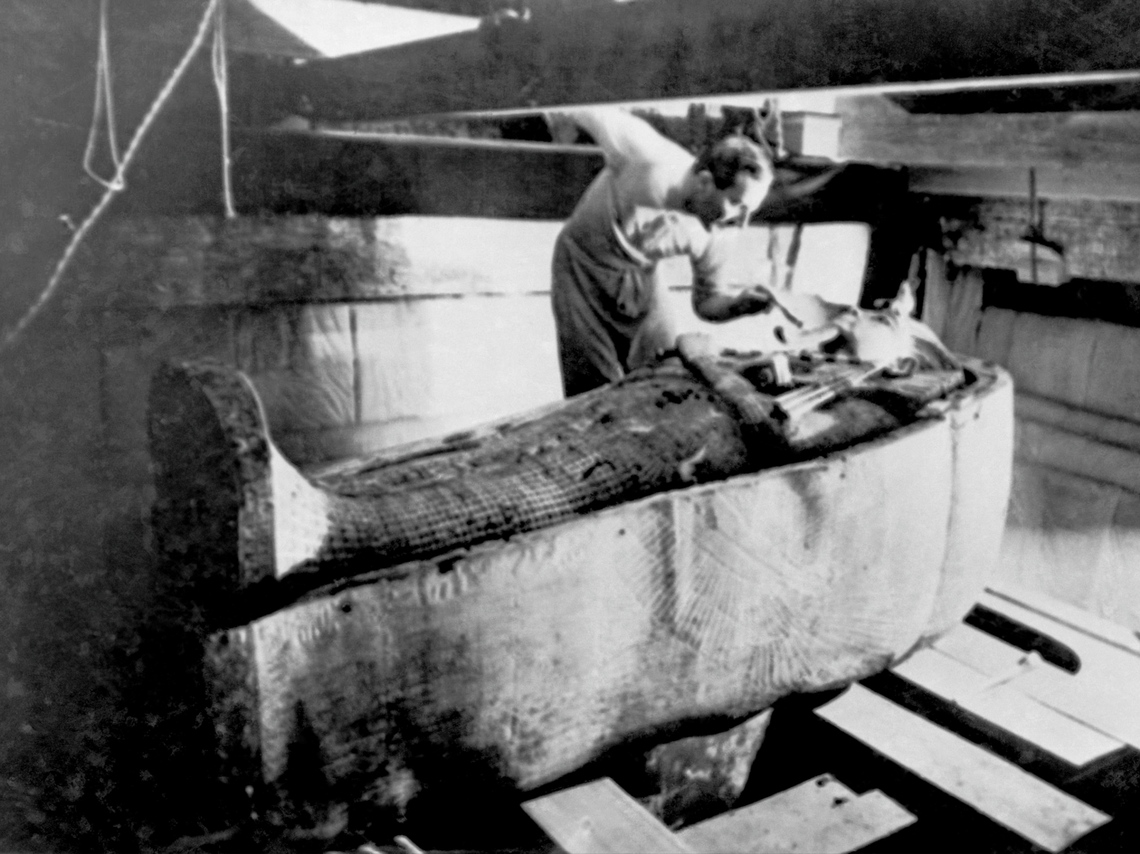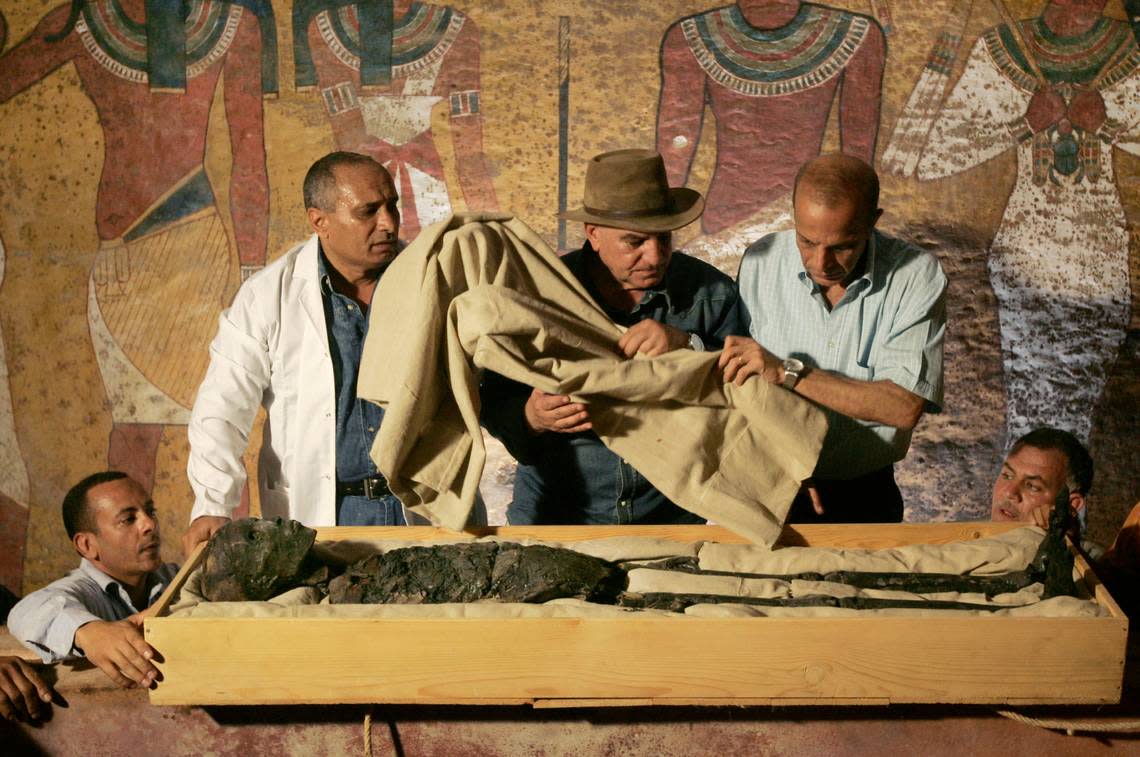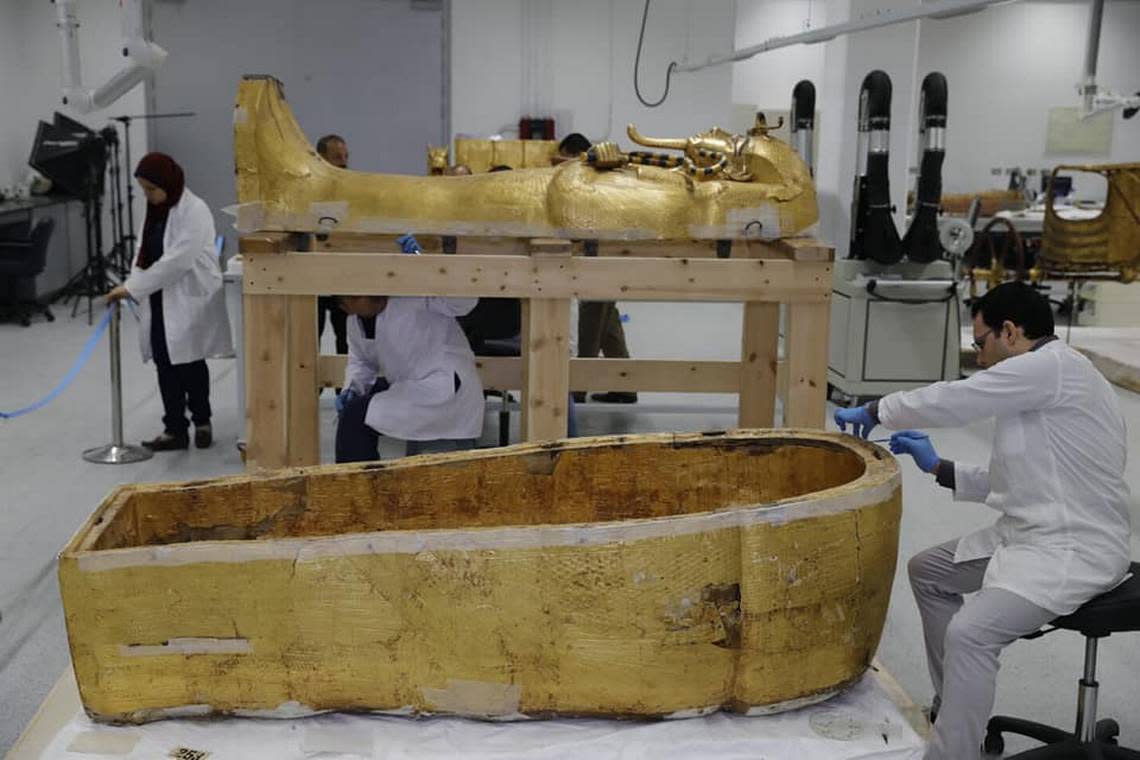Searching in the desert of Egypt’s Valley of Kings, British archaeologist Howard Carter and his team noticed a set of steps hidden underneath debris. Walking down the steps on Nov. 4, 1922, the archaeologists did not know what discovery lay before them, but 100 years later, the world knows: the Tomb of King Tutankhamen, the ancient Egyptian boy king.
King Tutankhamen, often referred to as King Tut, is widely regarded as the most famous ruler of ancient Egypt and the rediscovery of his tomb is still considered one of the most significant of modern archaeology, according to Egypt’s Ministry of Tourism and Antiquities.
A century later, the tomb’s treasures continue to intrigue and astound people around the world.
Rediscovering King Tutankhamen’s tomb
King Tutankhamen came to the throne at 10 years old and ruled ancient Egypt for nine years, from 1,336 to 1,327 B.C., according to Britannica. He died at the age of 19. Experts previously believed that he died of an infection in a broken leg; however, scientists found traces of malaria in his remains during research in 2010. This led them to conclude that he died from malaria combined with a bone disease.
After his death, King Tutankhamen was “erased from history because he was related to the unpopular king,” the Egyptian ministry explained. The location of his hastily constructed tomb was forgotten within 200 years, Britannica said.
Carter’s team discovered the once-forgotten entrance to the tomb of King Tutankhamen near the well-known entrance of the tomb of King Ramses VI, according to History.com. The researchers spent weeks excavating the tomb before entering the innermost chambers on Nov. 26, 1922.
Lifting the lid of the boy king’s sarcophagus, archaeologists came face-to-face with the mummy of the young ruler hidden away for over 3,000 years.
By size and decoration, King Tutankhamen’s tomb is “modest” compared to others in the Valley of Kings, the ministry said. By preservation, however, his tomb is incomparable.
Like many ancient Egyptian pharaohs, King Tutankhamen’s tomb was carefully filled with items for the deceased ruler’s journey into the afterlife. Entering the tomb, archaeologists found thousands of tightly packed artifacts, Britannica reported.
Exploring the tomb took four years, History.com reported. Removing all the contents of the tomb took almost a decade, Britannica said.
Still, the discoveries immediately captured the world’s attention and never lost it. In the 1960s and 70s, an exhibit named “Treasures of Tutankhamun” traveled the world, Britannica said.
King Tutankhamen’s tomb today
Over the years, King Tutankhamen’s tomb, stone sarcophagus with three nesting coffins, and mummified body have been carefully preserved, photos show.
People can visit the tomb and look at the walls decorated with scenes of the boy king’s funeral procession, among others, the Egyptian ministry said.
King Tutankhamen’s sarcophagus and mummy no longer reside in the tomb but a platform stands to mark their place, photos show.
Rather, the mummy of the boy king has been removed to be studied and carefully preserved, photos show and the Associated Press reported.
Researchers have made extensive efforts to restore the priceless artifacts to their original condition and maintain them. Photos show experts inspecting the restoration process of King Tutankhamen’s innermost gold coffin in 2019.
Treasure of King Tutankhamen
King Tutankhamen’s tomb, unlike most other royal tombs, remained “miraculously intact,” suffering from only a little looting before its location was forgotten, the Egyptian Ministry of Tourism and Antiquities said.
About 5,000 artifacts — ranging from clothes to jewelry, furniture to toys, weapons to cosmetics — were found in the tomb, the ministry said. Many of these artifacts now reside in The Egyptian Museum in Cairo.
One such artifact is the intact head of a leopard with the symbol of King Tutankhamen carved between its eyes, photos show.
Archaeologists also found a vase shaped like an ibex adorned with real horns, photos show. The 17-inch-tall vase has since lost one horn.
A wooden fan covered in gold and hieroglyphic text was also found in the tomb, photos show.
A smaller bracelet of a scarab beetle made of deep-blue lapis lazuli and gold also emerged from the tomb, the museum said.
Relieved from its 3,000-year duty of guarding the door, a 6-foot-tall statue of King Tutankhamen, made of wood and covered in gold, also came from the tomb, photos from the museum show.
King Tutankhamen and his tomb are iconic symbols of Egypt known and celebrated around the world.
Google Translate and Facebook Translate were used to translate news releases from Egypt’s Ministry of Tourism and Antiquities and posts from The Egyptian Museum.
Hidden room — with ancient pink sarcophagus — emerges from sand-filled tomb in Egypt
Suspicious fruit ship had 1,700 smuggled Egyptian artifacts on board, officials say
2,600-year-old blocks of cheese found in pottery at pyramid in Egypt, archaeologists say
Source: Read Full Article





